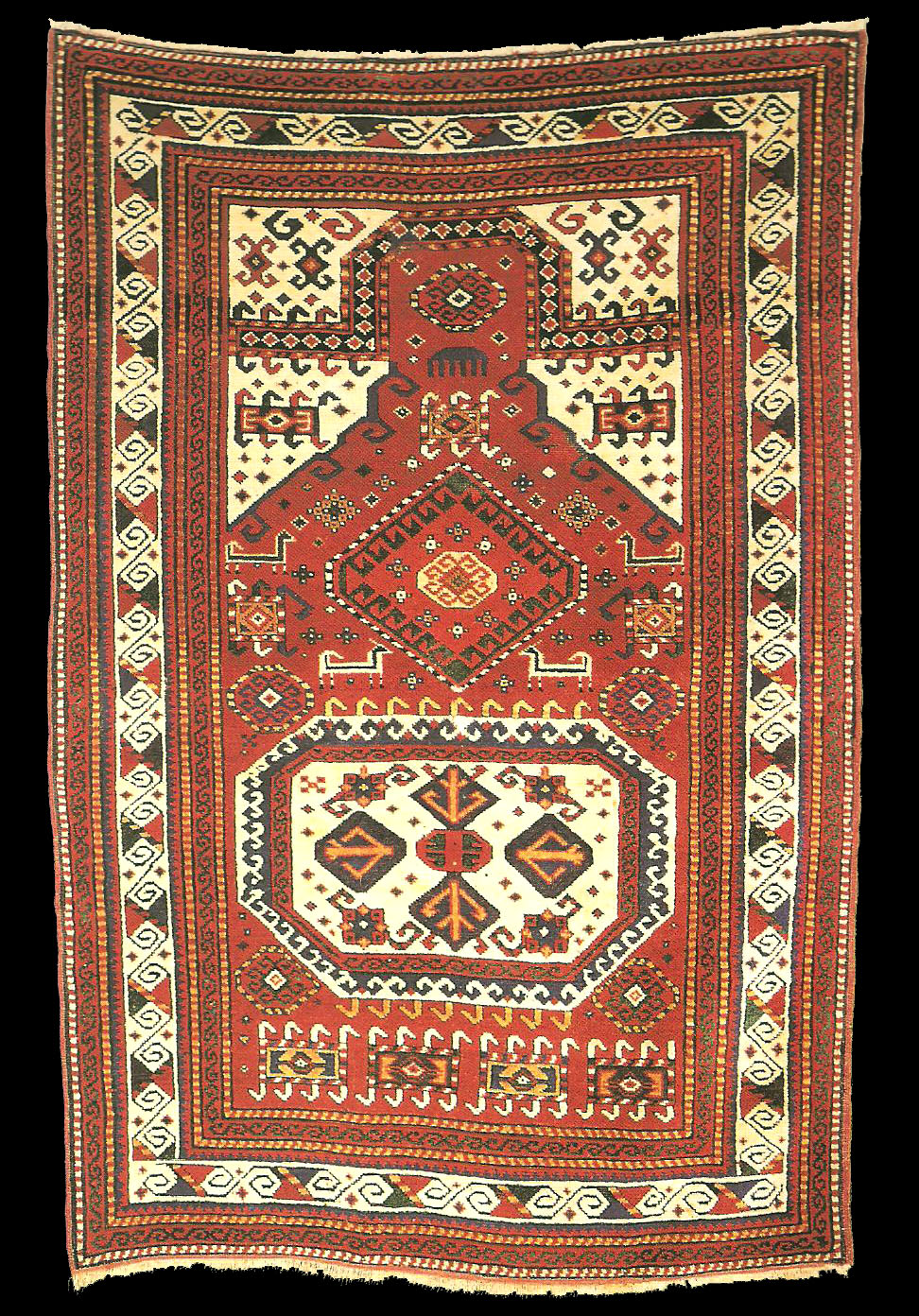This rug belongs to a small group of mid- to late nineteenth-century south
Caucasian pieces usually attributed to the Kazak weaving area. It shares a
number of design characteristics with the rugs in plates 23 and 31.
Describing a similar example sold in his gallery on 17 July 1981, Jean
Lefevre suggested that some details of the ornamentation recall the
decorative style of seventeenth- and eighteenth- century silk embroideries
made in Shemaka, and that other aspects of the decorations (as well as the
wool and handle) point to the southern regions of Talish or Moghan. The
Lefevre rug was without doubt the model for a modern Turkish copy that was
exhibited at the 1983 ICOC in London. Another very similar example, dated
1865, was sold at Skinner's in 1991. That example, however, had the stylized
cartouche border associated with early related pieces (such as that shown in
plate 31).
There is a large group of related Kazak rugs that utilize central medallions
very similar to that seen here. These rugs differ, however, in that they
feature free-floating gabled prayer arches rather than the stylized mihrabs
of this group and its ancestors. They also generally have an arrowhead
border rather than the scrolled S border of these pieces. A hybrid example
was published in Hawley, Oriental Rigs, Antique and Modern, plate 50.
published at
Ralph Kaffel's Caucasian Prayer Rugs plate 21 |

